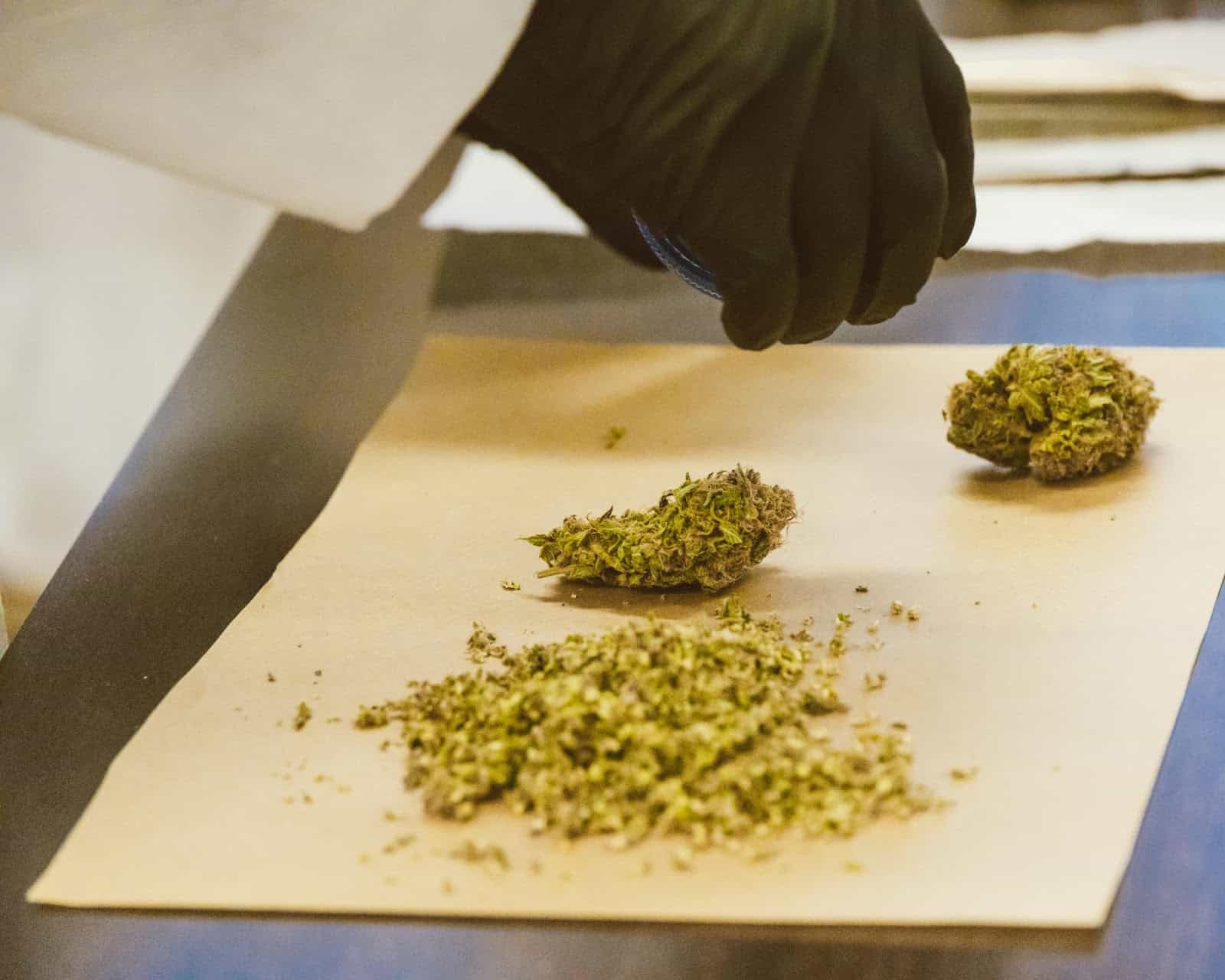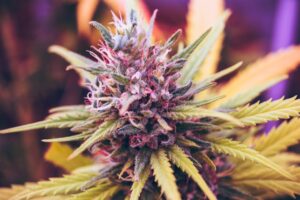To fully benefit from cannabis, you need to decarboxylate it. Tetrahydrocannabinol (THC) and other cannabinoids work better when they are activated by this process. We’ll discuss decarboxylation’s importance, the science, and how to utilize it at home to get the outcomes you desire from your cannabis products.
Key Takeaways
- Decarboxylation activates cannabis cannabinoids. Inactive substances like THCA are converted to THC, which is useful.
- Best decarboxylation temperatures are 200°F to 245°F and last 30–45 minutes for maximal cannabis activation without degradation.
- Decarboxylating cannabis with an oven, sous vide, mason jars, or a specific decarboxylator is widespread. All have advantages for preserving flavor and potency.
Decarbing Cannabis for Maximum Benefit: A Step-by-Step Guide
Decarboxylating cannabis enhances its potency and efficacy. Heat converts cannabis inactive elements, such as THCA, into THC, which makes people high. This alteration lets people enjoy the plant’s health advantages and manufacture reliable, potent products.
Decarboxylation removes a carboxyl group from cannabis. Lowering their molecular weight activates cannabinoids. This activity provides cannabis products with their desired effects and potency. Anyone who wants to manufacture effective edibles, tinctures, or cannabis-infused oils must decarboxylate their cannabis.
Introduction
After being harvested, raw cannabis plants are dried and cured to eliminate water. This crucial step prepares the plant for immediate use or refinement. Note that only little quantities of cannabis acids are active in cured cannabis at this period.
Decarboxylation is needed to improve its potency and effects. This is crucial for preparing cannabis-infused edibles. Decarboxylation activates THC, the active cannabinoid. This ensures users get the desired effect.
Knowing how decarboxylation works can help you maximize your stash. The process transforms inactive cannabinoids into active ones, ensuring that all cannabis products work effectively.
How Decarboxylation Works
Heating cannabis, which is called decarboxylation, is important to make its compounds stronger and receive all of its health advantages. Heating transforms cannabis acids like THCA and CBDA into active forms by removing a carboxyl group, improving product performance.
Decarboxylation of cannabinoids into their active forms is crucial for psychotropic and therapeutic effects. By making sure that all of these components are properly activated, this procedure makes sure that clients obtain consistent potency in all of their cannabis items.
Why Decarboxylation is Crucial for Cannabis Edibles
To manufacture edible cannabis, “decarboxylation” is needed. The cannabinoid acids in cannabis, such as THCA and CBDA, are not active when they are in their unprocessed form. Their psychotropic and beneficial effects are absent. Decarboxylation converts these molecules to THC and CBD. This makes edibles work.
If you forget to decarboxylate, your edibles may be weak. This phase is crucial for success. Producers seeking consistency in strength and effects should employ proven decarboxylation methods.
Understanding how crucial decarboxylation is for cannabis products helps consumers maximize the advantages of cannabinoids. Cannabis-based consumables will always be potent if this transformation is done correctly.
The Basis of Decarboxylation
Cannabis decarboxylation releases carbon dioxide by removing a carboxyl group from cannabis acids using heat. This modification activates cannabis cannabinoids at the correct temperature. Decarboxylases speed up this process and are essential for cannabinoids to function.
Optimal Temperatures for Decarboxylating Cannabis
Keep the temperature between 200°F and 245°F to decarboxylate cannabis. Decarboxylation is best at 250°F in the oven. This might take 30 minutes to an hour, depending on how damp and fresh the cannabis is.
A decarboxylation temperature chart shows how THCA becomes THC and CBDA becomes CBD at different heats. High temperatures accelerate cannabis breakdown and evaporate important terpenes, making it harmful to the cannabinoids. Keeping the temperature below 212°F may prevent complete decarboxylation.
Tightly controlling your heating settings helps activate all cannabinoids and prevents them from breaking down or losing efficacy, which is crucial for manufacturing trustworthy and effective cannabis products.
Step-by-Step Guide to Decarbing Cannabis in an Oven
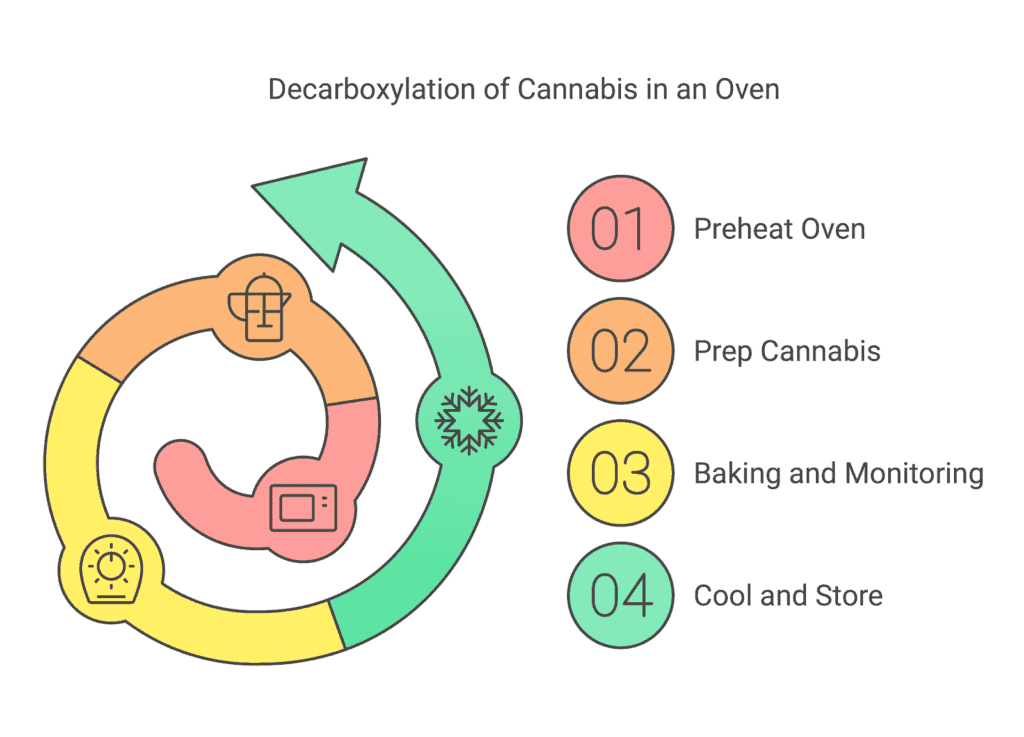
Cannabis lovers often heat cannabis in an oven to eliminate CO2. It’s simple and requires few tools, therefore people prefer it.
Following a few easy procedures can ensure that your decarbed cannabis is potent and can be used in many products that require it.
Preheat Oven
The oven must be heated properly to protect your raw cannabis buds and terpenes during the decarboxylation process. An oven timer maintains oven temperature, avoiding variations that might disrupt decarboxylation.
Prep Cannabis
Start by breaking cannabis plant buds into pea-sized bits. This technique increases the cannabis surface area and evens out decarboxylation heat. Break the buds using a grinder or your hands before spreading them equally on a parchment-lined baking sheet.
For full decarboxylation, heat must be properly distributed, hence careful preparation is essential. Properly preparing the cannabis flower activates all cannabinoids, producing a valuable product.
Baking and Monitoring
Once the cannabis flowers are ready, place the baking sheet in the oven and carefully observe the temperature. This baking step may change the cannabis’s color. It should transition from bright green to golden brown.
To ensure even heat, stir the cannabis midway through cooking. The ideal decarboxylation period is 30–45 minutes, depending on how fresh and moist your cannabis is.
Cool and Store
After baking, let the decarboxylated cannabis cool completely on the baking sheet. Cooling is vital because it helps maintain volatile compounds that may be lost otherwise and makes sure that the cannabinoids in the plant material are activated as much as possible. After the cannabis cools, pulse it in a food processor or grind it into powder.
This maintains decarboxylated cannabis’s flavor and potency. Cool and dark storage is recommended. This will preserve its therapeutic properties and keep it potent enough for repeat use.
Cannabis Decarboxylation Alternatives
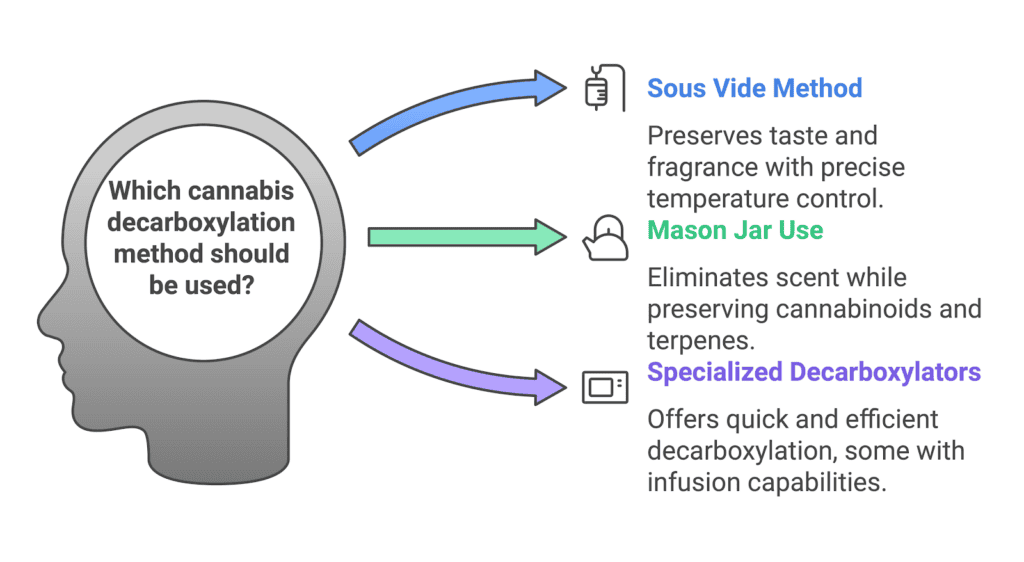
Decarboxylation of cannabis may be done in various methods besides baking. These alternatives may improve temperature control or fragrance when decarboxylating cannabis compounds.
The Sous Vide Method
In sous vide a well-regulated water bath is used to cook cannabis in a plastic bag. This method is ideal for preserving cannabis’s natural taste and fragrance and maintaining temperature.
Decarboxylation requires the sealed cannabis to be sous vide for 60–90 minutes.
Mason Jar Use
The mason jar approach eliminates the cannabis scent while preserving dissolved components by boiling them in water. This preserves the cannabinoids and terpenes.
Specialized Decarboxylators
The Levo II, Ardent FX, Ardent Nova, Magicalbutter DecarBox, and MB2e MagicalButter Machine are recommended for quicker and better decarboxylation.
Some varieties allow direct infusions in the same unit, making things easier.
Using Decarboxylated Cannabis
Cannabis may be utilized in numerous ways after it has been decarboxylated. Herbal medications, topicals, meals, and oils are possible products. Decarboxylated cannabis may be used to create cannabis oils in a slow pot or double boiler. Cannabis-infused butter enhances the flavor and potency of sweet or spicy dishes.
Infusing cannabis at home lets you manage components and effects to ensure a good outcome. Topicals manufactured from decarboxylated cannabis can assist with localized pain without getting you high. Adding essential oils to balms that contain cannabis can improve the fragrance and health advantages.
Use the proper quantity of cannabis in recipes to avoid dosage and strength issues. Discovering the best methods to use decarboxylated cannabis in daily life needs experimentation.
Common Mistakes to Avoid During Decarboxylation
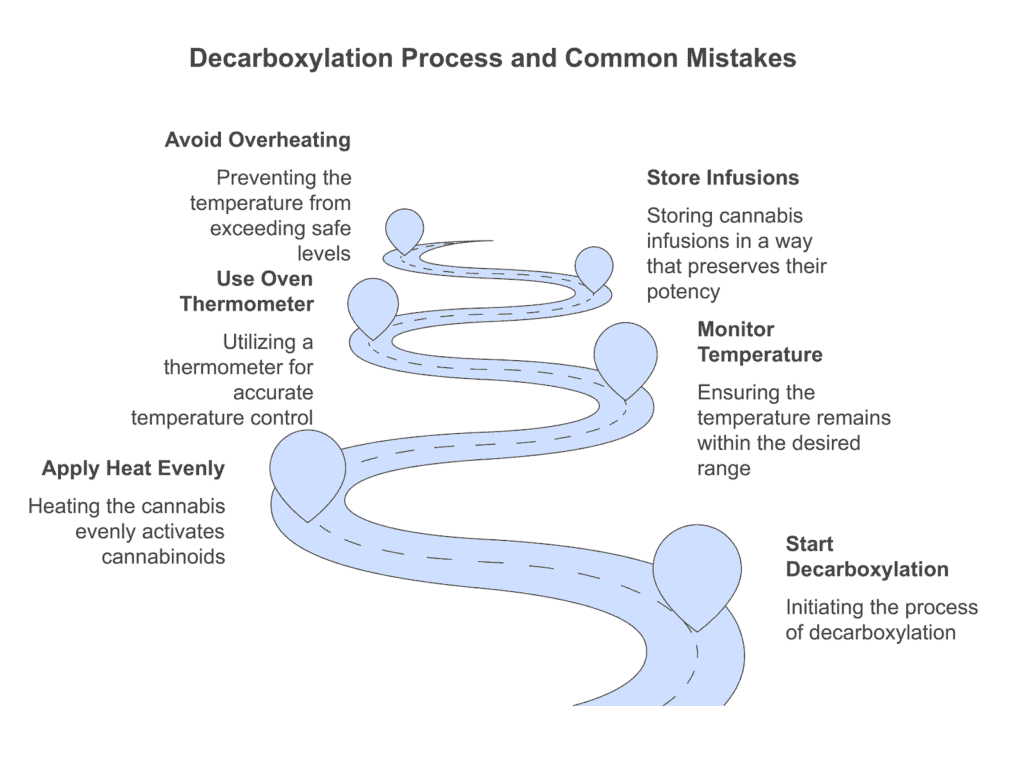
During the process of decarboxylating cannabis, a frequent error made is applying too much heat. This can cause the cannabinoids to degrade or even combust. To preserve more of the beneficial compounds, it’s crucial to avoid overheating and keep a close eye on both temperature and duration. The use of an oven thermometer could assist in maintaining precise temperature settings.
To preserve the strength of cannabis infusions, it is advisable to store them in sealed containers that are kept away from sources of heat and light. Performing decarboxylation within a mason jar may lessen cannabinoid loss due to evaporation.
Improperly decarboxylated cannabis often leads to undesirable flavor as well as diminished efficacy.
Summary
The process of decarboxylation is essential for accessing the complete potential of cannabis. Mastering this technique allows you to make certain that your cannabis products possess robust strength and efficacy. It’s vital to nail down each detail, from selecting the optimal temperature to sidestepping prevalent errors, in order to secure both peak potency and the desired therapeutic effects.
Adhering strictly to well-defined procedures ensures proficient decarboxylation of your cannabis, paving the way for premium edibles, tinctures, and infused oils. Bear in mind that accuracy and a deliberate approach are fundamental components for fruitful decarboxylation.
Frequently Asked Questions
What is decarboxylation, and why is it important for cannabis?
Decarboxylation is the heating process that converts THCA into THC, activating the psychoactive properties of cannabis.
This step is essential for maximizing the therapeutic benefits and potency of cannabis products.
What is the optimal temperature for decarboxylating cannabis?
The optimal temperature for decarboxylating cannabis is between 200°F and 245°F, with 250°F being an effective maximum.
Maintaining this range ensures the proper activation of cannabinoids.
Can I use alternative methods to decarboxylate cannabis besides using an oven?
Yes, you can use alternative methods like sous vide, mason jar, or specialized decarboxylators, which provide better temperature control and minimize odor.
These options can enhance your decarboxylation process effectively.
What are some common mistakes to avoid during the decarboxylation process?
To ensure effective decarboxylation, avoid using excessive heat and carefully monitor both temperature and time.
Additionally, properly store decarboxylated cannabis to prevent cannabinoid degradation and maintain potency.
How can I use decarboxylated cannabis in different products?
Decarboxylated cannabis can be effectively used in various products, including edibles, tinctures, infused oils, and topicals, providing enhanced control over their ingredients and effects.
This versatility allows you to tailor your cannabis products to meet specific needs and preferences.

